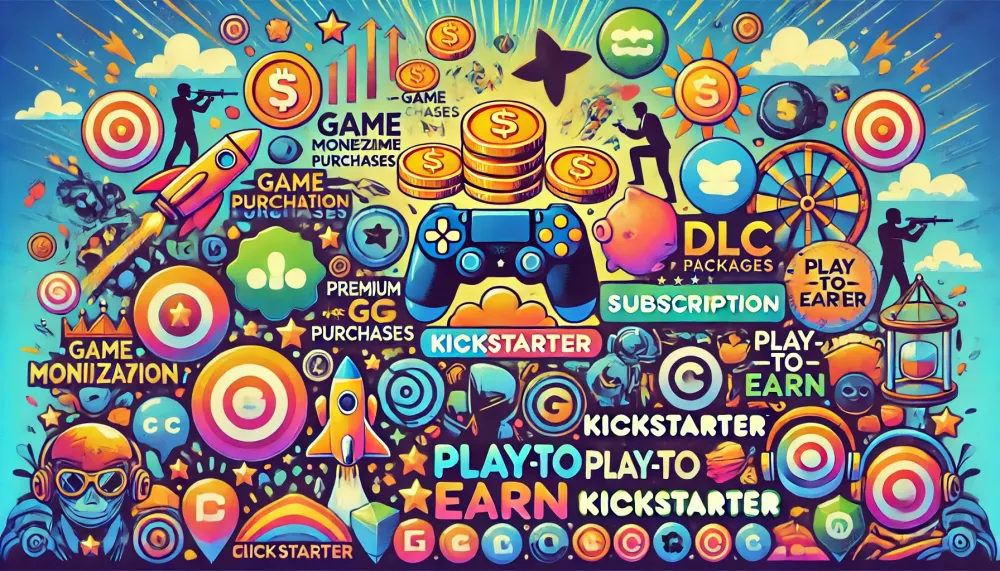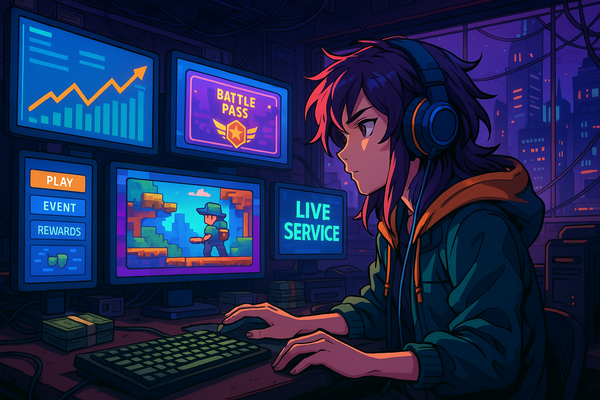Exploring 10 game monetization models: Pros, cons, and strategic considerations
In the ever-evolving landscape of game development, choosing the right monetization model is crucial. The right strategy can ensure a game’s success, while the wrong one can spell disaster. Let’s delve into ten popular game monetization models, exploring their strengths, weaknesses, and the strategic considerations each requires.
Premium Games: Quality Over Quantity
Premium games are straightforward: players pay upfront to download or purchase the game. This model is known for generating immediate revenue and providing a complete, uninterrupted gaming experience. Players enjoy the full content without any hidden costs or additional purchases.
However, the high initial price can deter potential players, especially if they are unsure about the game’s quality or content. Moreover, the success of premium games heavily relies on the initial launch, making marketing and first impressions critical. Despite these challenges, premium games can thrive by delivering exceptional quality and a compelling experience that justifies their cost.
Free-to-Play: Attracting the Masses
The free-to-play (F2P) model removes the initial cost barrier, attracting a large player base. Revenue is generated through in-game purchases, such as cosmetics, power-ups, or additional content. This model has the potential for high revenue and broad reach.
However, attracting and retaining players in a competitive market is challenging. F2P games require constant updates and new content to keep players engaged and spending. Balancing free content and in-game purchases is key to maintaining player satisfaction without making the game feel pay-to-win.
Subscription Models: Building Loyalty
Subscription-based games offer a steady, predictable revenue stream. Players pay a recurring fee, which can provide a stable financial foundation for developers. This model encourages long-term engagement as players have a continuous investment in the game.
The challenge lies in consistently delivering high-quality content to justify the subscription fee. It can take years to build a substantial subscriber base and achieve profitability. Successful subscription models often rely on a strong community and regular updates, making long-term content planning essential.
Ads-Based Games: Quick Wins
Ads-based games are free for players, generating revenue through advertisements. This model can quickly become profitable, especially with a large player base. However, frequent ads can disrupt gameplay and frustrate players, leading to a poor user experience.
Maintaining player engagement is difficult, and ad revenue can be volatile, fluctuating with market conditions. Integrating rewarded ads, where players watch ads for in-game rewards, can mitigate some negative impacts and enhance player engagement.
Hybrid Models: The Best of Both Worlds
Hybrid monetization models combine elements from different strategies, offering flexibility to cater to various player types. For instance, a game might be free-to-play with optional subscriptions and in-game purchases. This diversity can stabilize income and reduce reliance on a single model.
The complexity of managing and balancing multiple revenue streams can be daunting. Poorly implemented hybrid models can overwhelm players, detracting from the gaming experience. Thoughtful integration and balancing are crucial for success.
DLC (Downloadable Content): Extending the Journey
Downloadable Content (DLC) extends a game’s lifecycle by providing new content post-launch. This model can generate continuous revenue from an existing player base. However, ongoing development of new content demands resources and careful planning.
Balancing free content with paid DLC is challenging. Developers must ensure the base game offers sufficient value while creating compelling DLC that enhances the game experience without feeling essential to core gameplay.
Play-to-Earn: Gaming with Rewards
The play-to-earn model attracts players with the promise of tangible rewards, creating a player-driven economy. This model has gained popularity, particularly in blockchain-based games, where players can earn cryptocurrency or NFTs.
However, navigating the regulatory landscape can be complex, and ensuring the security of transactions is critical. Establishing a sustainable economy that benefits both players and developers is challenging but rewarding.
Real Money Gambling: High Stakes
Real money gambling in games can generate significant revenue, with players engaging intensely for the chance to win real money. However, this model requires strict regulatory compliance and presents ethical concerns.
Fraud prevention and ensuring fair play are essential. Developers must invest in robust security measures and transparent systems to maintain trust and legality.
Sponsorship: Partnerships for Profit
Sponsorship deals provide upfront funding without charging players. High-profile partnerships can enhance a game’s visibility and credibility. However, securing sponsorships can be competitive, and poorly integrated deals can disrupt gameplay and frustrate players.
Sponsorships should align with the game’s theme and audience, offering added value rather than detracting from the player experience.
Crowdfunding: Community-Driven Development
Crowdfunding can cover development costs before a game’s release, building a community of invested players. Successful campaigns rely on clear communication, realistic goals, and regular updates.
However, crowdfunded projects come with significant pressure to meet backer expectations. Delays or changes can lead to dissatisfaction and backlash. Building and maintaining a strong community is crucial for ongoing support and enthusiasm.
Choosing the right monetization model is a critical decision for game developers. Each model has unique advantages and challenges, and the best choice depends on the game’s design, target audience, and long-term goals. By understanding these ten monetization strategies, developers can make informed decisions that align with their vision and business objectives, ultimately leading to a successful and sustainable game.
Game Development, Monetization, Game Revenue Models, Premium Games, Free-to-Play, Subscription Games, Ads-Based Games, Hybrid Monetization, DLC, Play-to-Earn, Real Money Gambling, Sponsorship, Crowdfunding




